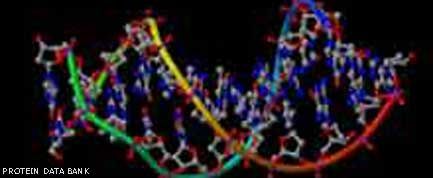Cell Division Reversed in Possible Path to Cancer Treatment

One key to advanced life is cell division. Cells divide millions of times every day to sustain the life and growth of a single human.
But out-of-control cell division can fuel cancer.
Now scientists have for the first time reversed the process of cell division, a breakthrough that could eventually lead to treatments for cancer and other disorders.
They gained control over a protein responsible for division, then halted and reversed the process. Duplicate chromosomes were sent back to the center of the original cell, an event once thought impossible.
"Our studies indicate that the factors pointing cells toward division can be turned and even reversed," said lead researcher Gary Gorbsky of the Oklahoma Medical Research Foundation. "If we wait too long, however, it doesn't work, so we know that there are multiple regulators in the cell division cycle. Now we will begin to study the triggers that set these events in motion."
The research is detailed in the April 13 issue of the journal Nature.
"No one has gotten the cell cycle to go backwards before now," Gorbsky said. "This shows that certain events in the cell cycle that have long been assumed irreversible may, in fact, be reversible."
Sign up for the Live Science daily newsletter now
Get the world’s most fascinating discoveries delivered straight to your inbox.
"Dr. Gorbsky's results provide elegant proof that the cell cycle must be precisely controlled," said Rodger McEver, vice president of research at the facility. "Now he and his lab can work toward developing innovative methods to probe and better understand the complex process of cell division.
- Chemotherapy 'Bomb' Developed in Cancer War
- Cancer Takes Over Top Spot as Killer of Americans Under 85
- Gold Probes Could Reveal Cancer in Your Body
- Marine Mammals Suffer Human Diseases
Robert is an independent health and science journalist and writer based in Phoenix, Arizona. He is a former editor-in-chief of Live Science with over 20 years of experience as a reporter and editor. He has worked on websites such as Space.com and Tom's Guide, and is a contributor on Medium, covering how we age and how to optimize the mind and body through time. He has a journalism degree from Humboldt State University in California.












